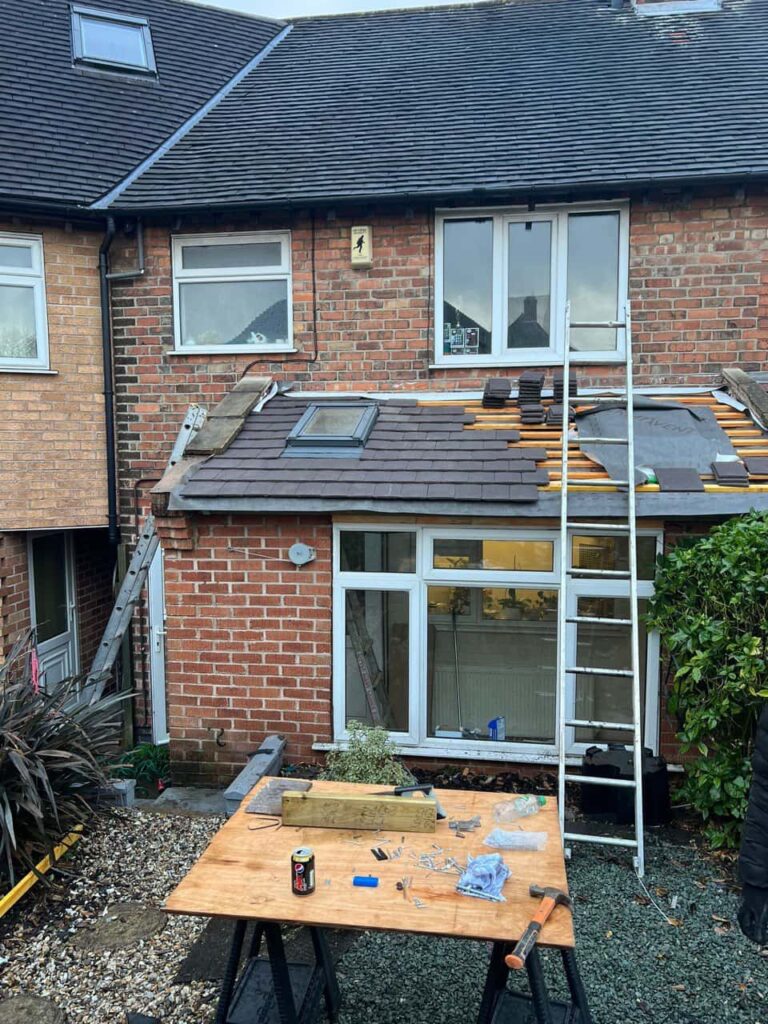Introduction: Undertaking DIY felt roofing repairs or installations can be a rewarding endeavour, but it’s crucial to prioritise safety throughout the process. Working at heights and handling roofing materials pose inherent risks, so taking proper precautions is essential to prevent accidents and injuries. This blog post will discuss essential safety tips for DIY enthusiasts tackling felt roofing projects to ensure a safe and successful outcome.
Wear Appropriate Safety Gear:
- Before starting roofing work, ensure you have the appropriate safety gear to protect yourself from hazards. This includes a sturdy pair of non-slip shoes or boots with good traction to prevent slips and falls, a hard hat to protect your head from falling objects, and work gloves to shield your hands from sharp edges and debris.
Use a Secure Ladder:
- Always use a sturdy and stable ladder to access the roof safely when working at heights. Ensure the ladder is set up on level ground and secured at the top to prevent it from slipping or shifting during use. Extend the ladder three feet above the roof edge to provide a stable handhold for transitioning onto the roof.
Practise Proper Ladder Safety:
- When climbing or descending a ladder, maintain three points of contact using both hands and one foot or both feet and one hand. Avoid carrying heavy or bulky materials while climbing the ladder, as this can throw off your balance and increase the risk of falls. Never overreach while on the ladder; reposition it as needed to maintain a safe working position.
Secure Tools and Materials:
- Ensure that all tools, equipment, and materials are securely fastened or tethered to prevent them from falling off the roof and causing injury to yourself or others below. Use tool belts, buckets, or safety lines to keep items within reach while working on the roof. Avoid cluttering the work area with unnecessary tools and materials to minimise tripping hazards.
Be Mindful of Weather Conditions:
- Check the weather forecast before starting any roofing work, and avoid working on the roof during inclement weather conditions such as rain, high winds, or extreme temperatures. Wet or slippery surfaces can increase the risk of slips and falls, while strong winds can destabilise ladders and make it difficult to control materials.
Take Breaks and Stay Hydrated:
- Roofing work can be physically demanding, so listening to your body and taking regular breaks to rest and rehydrate is essential. Working in hot weather can increase the risk of heat-related illnesses, so drink plenty of water and take breaks in shaded areas to avoid overheating.
Know When to Seek Professional Help:
- While DIY roofing projects can be fulfilling, you must recognise your limitations and know when to seek professional assistance. If you encounter complex issues or feel unsure about the safety of a task, don’t hesitate to enlist the help of a qualified roofing contractor who can ensure the job is done safely and effectively.
Conclusion: By following these essential safety tips, DIY enthusiasts can confidently tackle felt roofing projects and minimise the risk of accidents and injuries. Remember to prioritise safety at all times, use appropriate safety gear, and know your limits. With proper precautions and careful planning, DIY roofing projects can be completed safely and successfully.
Call us on: 01354 707 496
Click here to find out more about March Roofing Repairs
Click here to complete our contact form and see how we can help with your roofing needs.

